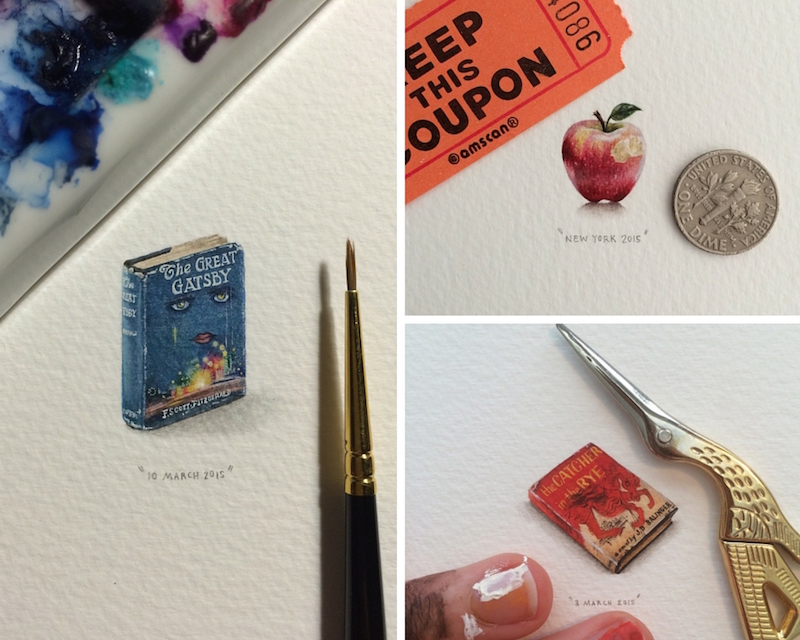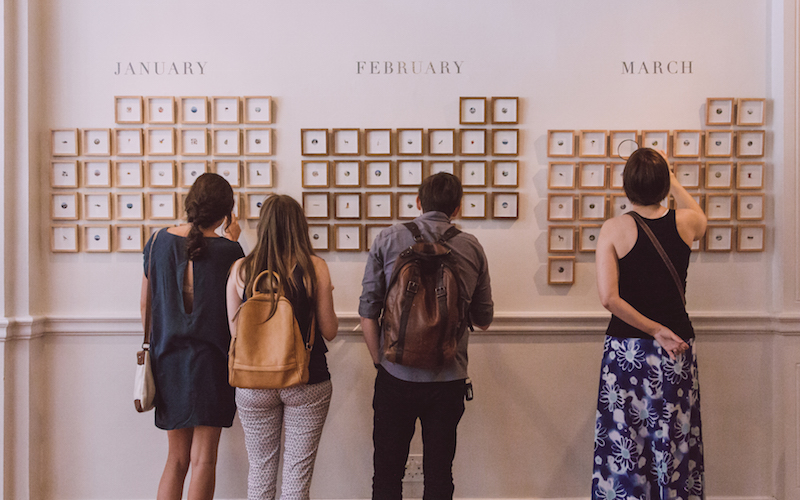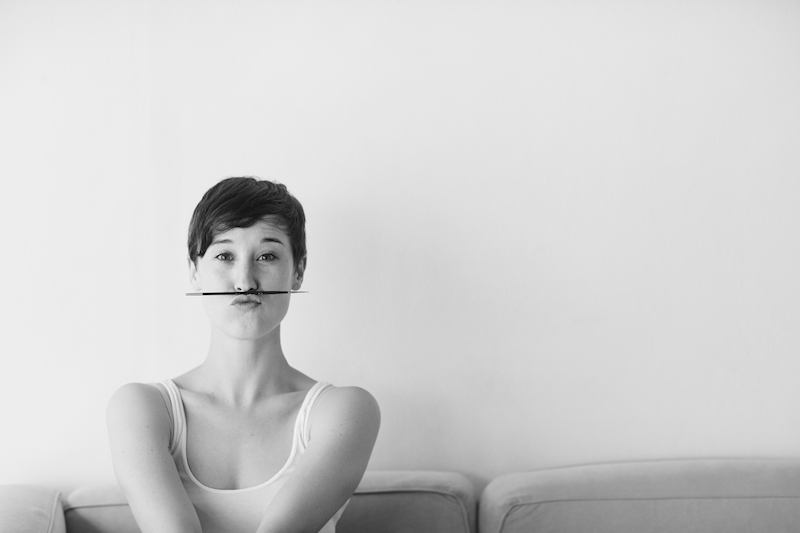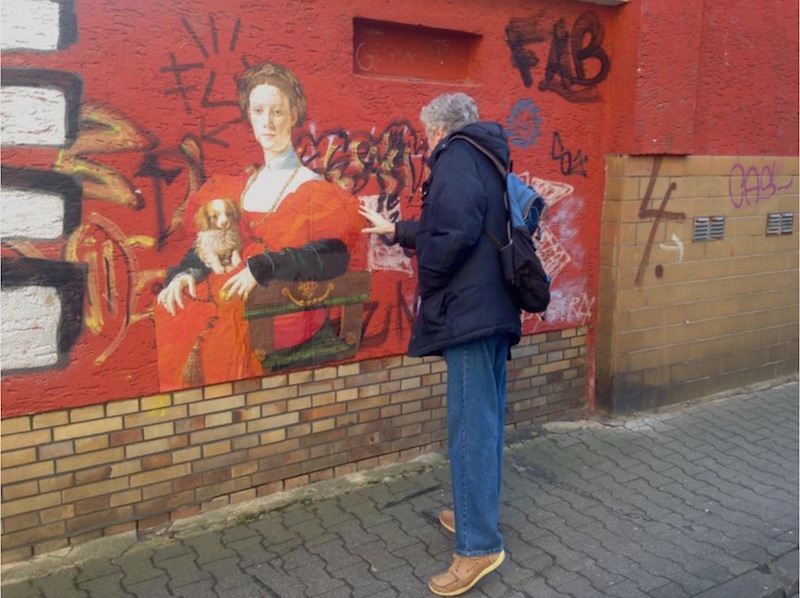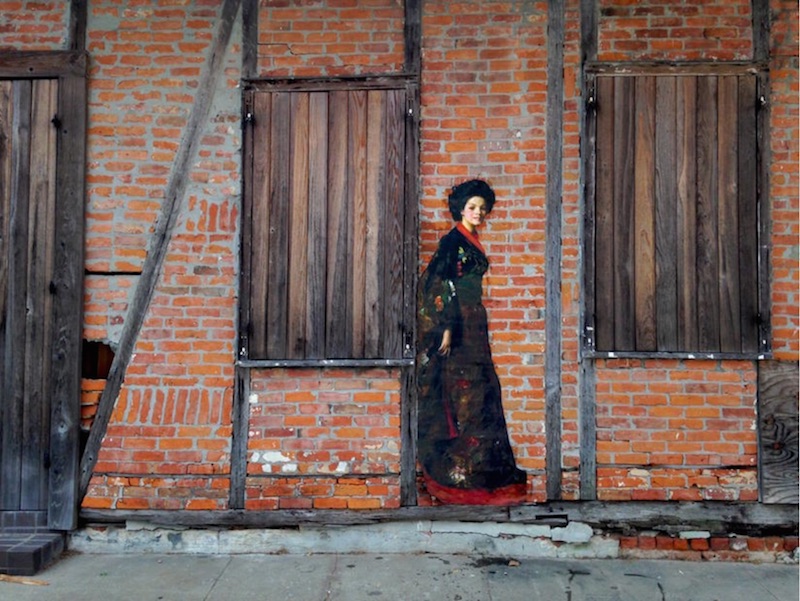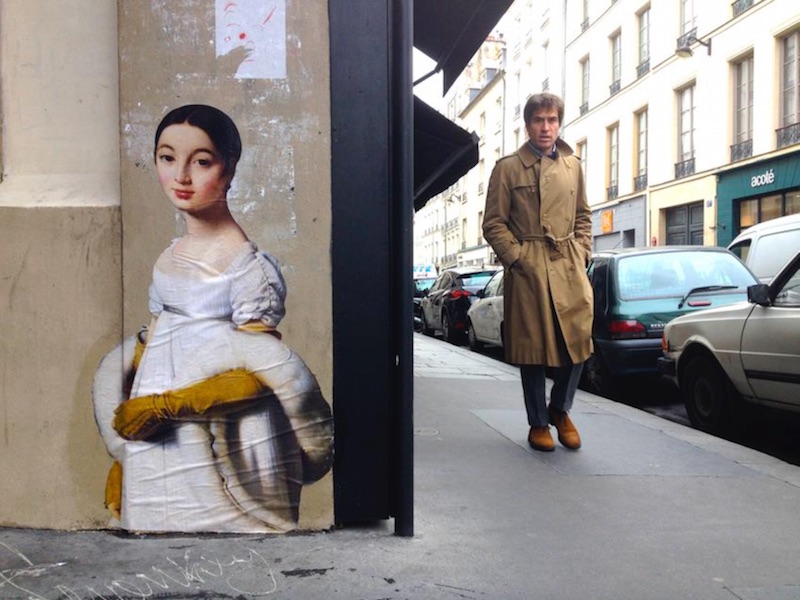
JOURNAL
documenting
&
discovering joyful things
20 ways to find creative inspiration when you're ready to give up
 Sometimes the ideas flow easily, and creativity is pure joy. Other times, finding your creative path is like wading through syrup (only not sweet, either). Don't give up! Here are 20 ways I use to cut through, depending on what I'm going through and what I need. Maybe one or two of them will work for you, too.
Sometimes the ideas flow easily, and creativity is pure joy. Other times, finding your creative path is like wading through syrup (only not sweet, either). Don't give up! Here are 20 ways I use to cut through, depending on what I'm going through and what I need. Maybe one or two of them will work for you, too.
Good luck! Naomi xo
ps. It's probably best NOT to approach these with whatever is stumping you front-of-mind. Try not to be strategic. Give your brain a little holiday, and let it just follow what ever paths these activities take it. You might find an unexpected solution to your problem and, if not, at least you will return to it refreshed, having seen and/or done something different and uplifting.
* Take a walk while listening to music * Work in your garden, or pot some indoor plants * Keep an “ideas journal.” One that makes it easy for you to write AND draw * This is a silly and fun ideas generator that sometimes actually works * Look through old reference picture-books (like old encyclopaedias) * Join the adult colouring trend * Shake things up. Do something out of your comfort zone * Learn a new skill. This will teach you how to make anything * Browse through second-hand shops and markets * Meditate for five minutes a day. Here’s how * Go to a cafe by yourself. Listen to other conversations. Write 200 words of anything at all in your notebook * Listen to some TED talks * Take your camera for a walk. Notice things differently through the lens * Turn off all your electronics. Be completely present in the moment * Turn your electronics back on. Allow yourself to get lost in Pinterest and Instagram: follow anything that takes your fancy * Explore this list of tools for creating ideas * Keep a dream journal and write down your dreams the moment you wake up * Follow the Swiss Miss blog to see what other creatives are doing * Read more books * Visit an art gallery
7 messages in bottles
 I’ve been reading about messages in bottles. It’s research for my book, and it has been a lot of fun. Fascinating, creative, poignant, sometimes heartwarming, messages, cast adrift* in the hope that someone, somewhere, will find them. Here are seven of my favourites. (There are loads more, but you’ll have to read about them in the book, wink wink).
I’ve been reading about messages in bottles. It’s research for my book, and it has been a lot of fun. Fascinating, creative, poignant, sometimes heartwarming, messages, cast adrift* in the hope that someone, somewhere, will find them. Here are seven of my favourites. (There are loads more, but you’ll have to read about them in the book, wink wink).
The year is 1493. On his journey back to Spain after stumbling upon North America, Christopher Columbus is beset by a storm on the North Atlantic and believes his ship, La Niña, will likely be shipwrecked. He writes a desperate note to the Spanish Queen Isabella, telling her of his situation and that new land has been found, and tosses it into the ocean in a bottle.
Columbus survives the storm and returns home a hero, but his message in a bottle is yet to be found.
The year is 1784. Japanese sailor Chunosuke Matsuyama is treasure-hunting in the Pacific Ocean. He and his 43 shipmates are shipwrecked on a coral reef during a storm, and forced to take refuge on a nearby island with very little food or fresh water. Knowing he is likely to die, Matsuyama scratches the story of the shipwreck onto thin pieces of wood from a coconut tree, then casts them adrift in a bottle.
The bottle is found more than 150 years later, in 1935, on the shoreline of Japan.
The year is 1912. Early in the morning of 15 April, the RMS Titanic sinks in the North Atlantic Ocean after colliding with an iceberg on its way to New York. Before he dies, a 19-year-old passenger named Jeremiah Burke scribbles a note, and sets it adrift in a bottle.
“From Titanic. Goodbye all. Burke of Glanmire, Cork.”
One year later, the bottle washes ashore in Dunkettle, Ireland, only a few miles from Burke’s family home.
The year is 1914. WWI private Thomas Hughes writes a message for his wife and tosses it into the English Channel as he leaves to fight in France.
“Dear Wife, I am writing this note on this boat and dropping it into the sea just to see if it will reach you. If it does, sign this envelope on the right hand bottom corner where it says receipt. Put the date and hour of receipt and your name where it says signature and look after it well. Ta ta sweet, for the present. Your Hubby.”
Hughes is killed in battle only two days after releasing his letter. The bottle is found 85 years later, in 1999, in the River Thames, and is delivered to Hughes’ 86-year-old daughter Emily Crowhurst, now living in New Zealand.
The year is 1915. After the British ocean liner RMS Lusitania is torpedoed by a German u-boat during the first World War, one of the 1198 passengers and crew who ultimately perish with the ship hurriedly writes this message, and pushes it into a bottle:
“Still on deck with a few people. The last boats have left. We are sinking fast. Some men near me are praying with a priest. The end is near. Maybe this note will--”
The year is 1985. A man writes a letter, seals it in a bottle, and tosses it off the coast somewhere in Nova Scotia, Canada. The note says:
“Mary, you are a really great person. I hope we can keep in correspondence. I said I would write. Your friend always, Jonathon. Nova Scotia, ‘85.”
The bottle washes up 28 years later on a Croatian beach, but nobody has yet found Jonathon or Mary.
The year is 1990. A message is tossed overboard in a bottle, during a ferry-ride from Hull in England to Belgium:
“Dear finder, my name is Zoe Lemon. Please would you write to me, I would like it a lot. I am 10 years old and I like ballet, playing the flute and the piano. I have a hamster called Sparkle and fish called Speckle.”
In 2013, Zoe’s parents receive a letter at Christmas time, sent from the Netherlands: “Dear Zoe, yesterday on one of my many walks with my wife along the dikes of Oosterschelde looking among the debris thrown by the sea of embankment I found a little plastic bottle containing your message.”
What this research has got me thinking about is that before we had any kind of mobile or satellite technology, which is incredibly recently, there was pretty much no other way to get a message out there from a sinking ship than to trust it to a bottle and the waves and hope for the best.
Those sad and desperate notes, scribbled in literally the last few minutes of people's lives, show just how powerful is the human need to connect, whether it's to reach out to a loved-one, or just to make sure that someone - even a stranger - will know what happened to us. For many of these people, communication was their last deliberate act.
* If you have qualms about the romance of messages in bottles versus the potential environmental damage of tossing something into the ocean, famous Canadian oceanographer Dr Eddy Carmack may be able to put your mind at rest. "Drift bottle science is cheap, fun, and environmentally friendly," he says.
Dr Carmack is the head of the Drift Bottle Project, which launched in 2000 and has so far released more than 6400 bottles, in an important study of ocean surface currents.
Just maybe steer away from the plastic bottles, if you're going to do this. Plastics photodegrade in sunlight, meaning they break down into ever-smaller pieces, and the tiniest pieces release toxins that can poison the entire food chain when they are eaten by marine animals and birds.
On the other hand, glass bottles are relatively benign, says Dr Carmack. "The unfound bottles eventually break down, and become part of the marine environment."
Image credits: Bhavyesh Acharya, licensed for unlimited use under Creative Commons
Wooden letterbox with a WiFi-connected printer inside

 Hold onto your hats because I think I have found the best child's toy ever invented. It's fun, it's educational, it builds relationships, it uses technology to create real connections, and it's super cute!
Hold onto your hats because I think I have found the best child's toy ever invented. It's fun, it's educational, it builds relationships, it uses technology to create real connections, and it's super cute!
Meet Turtle Mail, a wooden letterbox that can deliver real-time printed messages to your children. It contains an embedded thermal printer and is WiFi connected, so family and friends can send the children they love special messages from their mobiles or computers.
For us, this would be amazing! Mr B works very long hours, and is most often at work before our children wake up, and home long after they are in bed. Both sets of grandparents live a long way away, and the kids adore them but rarely get to see them. To enable parents and grandparents to surprise the children by sending little messages to their own "postbox" at any time during the day would be incredibly special, not to mention a lot of fun for the kids.
For security, parents have complete control over who will be allowed to send content to their children. They can send both text and images, and there are other apps that extend the play experience, like interactive Turtle Mail activities and characters, and a super-cute function with which you can "register" your child's favourite toy, and the toy can then send them messages.
Turtle Mail is part of a crowd-funding campaign that's about half way through, and half way towards its financial target. In case you don't know, crowd funding is when you pledge to make a donation to help a great idea achieve fruition - in this case the manufacture and distribution of Turtle Mail - but you only actually pay the money if the full target is reached within the stated timeframe. In return for your pledge, you also get a number of rewards.
Mr B and I made a pledge as soon as we saw this campaign, because we could easily see how incredible this toy would be for our family. So I really, REALLY hope the campaign reaches its target, so we can get our hands on our own Turtle Mail! If you want to take a look and maybe help support this exciting new, interactive toy, all the details are on their Kickstarter page (but be quick because there are only a couple of weeks left).
Why you should send thank-you notes and keep a gratitude journal
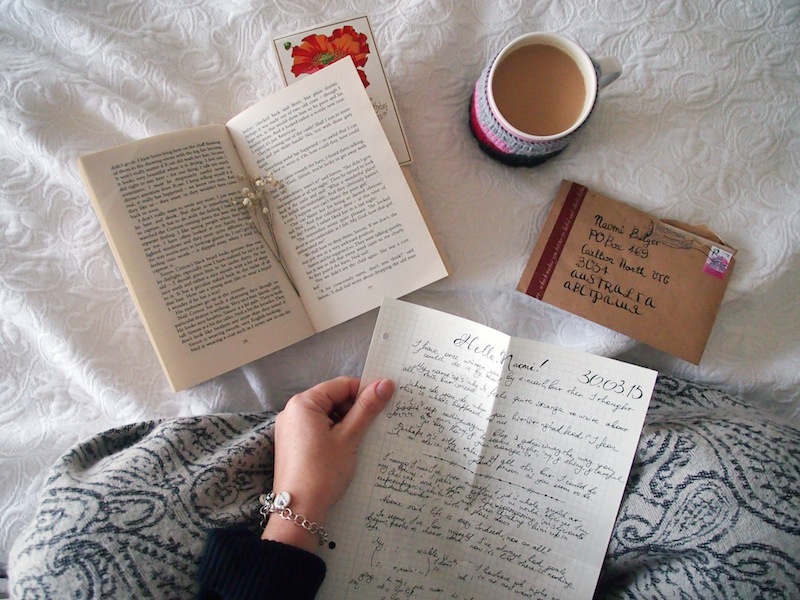 Did you know that regularly writing down your gratitude can make you a happier and healthier person, and make you more likely to exercise more, sleep better, and exercise kindness towards others?
Did you know that regularly writing down your gratitude can make you a happier and healthier person, and make you more likely to exercise more, sleep better, and exercise kindness towards others?
Woah! I mean few of us would argue that gratitude is a more beneficial emotion than the lack of gratitude, but this takes things to a whole new level. A scientific level, if you will, because I'm quoting the findings of Robert A Emmons and Michael E McCullough, published in the Journal of Personality and Social Psychology (vol.84, no.2).
Their study, called "Counting Blessings Versus Burdens: An Experimental Investigation of Gratitude and Subjective Well-Being in Daily Life" is a fascinating read.
Essentially Emmons and McCullough conducted three separate studies on "gratitude," randomly dividing the groups of people in each study into a further three different "conditions." They then asked them to a) document their feelings or experiences relating to these conditions, and b) provide some general "wellbeing rating" information about their health, exercise, sleep, moods etc. Depending on the study, they recorded this information on either a daily or weekly basis.
Instructions for the "gratitude condition" group in each of the three studies were the same:
"There are many things in our lives, both large and small, that we might be grateful about. Think back over the past [week / day] and write down on the lines below up to five things in your life that you are grateful or thankful for."
And it seems from the results that the recording of gratitude, the forced mindfulness and physicality of writing it down, can have a profound impact on both health and happiness.
(What I like to think about is that as the participants were divided randomly, it is likely that the existence of "things to be grateful for" was more-or-less equal among all participants. And yet these wonderfully positive findings were significantly more pronounced only in the groups that were instructed to write their gratitude down.)
So in Study 1, involving weekly reporting over 10 weeks, the "gratitude group" experienced fewer symptoms of physical illness, and spent a lot more time exercising. The emotions they experienced in response to someone helping them or giving them aid were associated with significantly higher ratings of joy and happiness.
"Participants in the gratitude condition felt better about their lives as a whole, and were more optimistic regarding their expectations for the upcoming week. They reported fewer physical complaints and reported spending significantly more time exercising," the report found.
And that's just from writing down your gratitude, folks!
In Study 2, while the health benefits were not as pronounced as in Study 1 (something the authors posited could have to do with the much shorter timeframe of the study - 13 days instead of 10 weeks), the people in the "gratitude condition" seemed to become kinder. People who had been asked to record their gratitude were "more likely to report having helped someone with a personal problem or offered emotional support to other."
Finally in Study 3, in which the participants were all adults with neuromuscular diseases, the findings of the previous two studies held firm. "It appeared that the gratitude condition not only fostered daily positive affect, but also, reduced daily negative affect," the authors found. "Participants in the gratitude condition reported considerably more satisfaction with their lives as a whole, felt more optimism about the coming week, and felt more connected with others."
Even "observer participants," people who were close to and living with the main participants, reported noticing a higher life satisfaction in those who had been recording their gratitude.
So here is my conclusion. Get out your pen and paper, and write down the things that make you grateful. Big or small, significant or insignificant. Do this every day, at the end of each day. "What made me grateful today."
It will make you happier, more optimistic, healthier, and more considerate.
And even better: if there is another person on that list, someone whose words or actions were the reason you felt grateful, write your thank-you to them, instead of in your journal. Why not put your gratitude to use, by spreading kindness to others?
ps. While we're in the mood for saying thank-you, don't forget that there are free postcard downloads to say thank-you to your postie for delivering your mail (rain, hail, snow or heatwave) here
ps2. Here is a link to the Emmons and McCullough article if you want to read the full report
Halloween inspiration board (friendly ghosts and purring cats)
 I know, I know, but I really love Halloween. On my street, it is such a community event. Crowds of small children, dressed to the nines in the most adorable costumes, carry their little jack ‘o lantern buckets along the footpath. The braver, older ones traipse up to front doors and knock with hope in their hearts, while the smaller, more timid ones stand and shuffle their feet and wait to see what happens next…
I know, I know, but I really love Halloween. On my street, it is such a community event. Crowds of small children, dressed to the nines in the most adorable costumes, carry their little jack ‘o lantern buckets along the footpath. The braver, older ones traipse up to front doors and knock with hope in their hearts, while the smaller, more timid ones stand and shuffle their feet and wait to see what happens next…
We don’t really trick-or-treat on my street, we just treat. There’s an unspoken rule that if a house has decorations out the front or if the front door is open, it’s ok to knock. Otherwise, the kids just pass on by.
By the time Halloween rolls around it’s daylight saving in these here parts, so it’s almost like a giant summer street party. We meet neighbours we’ve passed at the shops and never spoken to before. Our children shyly make new friends. Often, trick-or-treating ends in impromptu barbecues and picnics and drinks all along the grassy island that divides our street. Honestly, Halloween is the best.
I’m completely comfortable with cherry-picking the things I like about Halloween, and ditching the things I don’t. I don’t like horror, I don’t like gore. I like my ghosts friendly and my black cats purring, you know? And I’m ok with that.
And so, bearing that in mind, here’s what I’ve pinned to my (imaginary) Halloween inspiration board, so far.
* I really wish somebody would invite me to a tortured artist Halloween party (who would you go as?)
* These marshmallow spider’s web cupcake toppings look more tasty than spooky
* Still on the subject of cupcakes (why not!), these printable monster cupcake holders are adorable
* Edible glow-in-the-dark secret messages! Ok, ok, these ones are on cupcakes TOO, but you could also put them on biscuits. Or something.
* A big handful of All Hallows Eve confetti
* And finally, this luna lamp is just about the most beautiful thing I have ever seen. It's part of a crowd funding campaign that's on right now, so act fast if you want to get your hands on one
Artist Lorraine Loots on surviving a 365-day project, and beyond
South African artist Lorraine Loots is my Instagram crush. She paints highly-detailed, hyperrealistic watercolour works on a daily basis, most of which would fit inside a five-cent coin. Very appropriately, she calls her work "paintings for ants."
"The images vary from eight to 30 millimetres in diameter," Lorraine explains. "When I started doing miniatures, people would say, 'Oh that's nice. But what would you do with something that small?' I just started saying they were made for ants."
Lorraine's work is beautiful, but her output is phenomenal. She started painting her miniatures in 2013, as part of a 365-day project. "The plan was simply that I would set aside an hour a day outside of my 'real job' to complete an artwork," she says.
"Initially, I thought of the project as a massive challenge, like a marathon or something I would be relieved to have survived. And it really was. But it also became this meditative time; a quiet and almost sacred part of each day. And as the days went by and the end came closer, I got sadder and sadder thinking that I'd have to stop. And then I realised that the project was mine, that I was the one who had made it up in the first place, and if I wanted to keep doing it, I could. And so I did."
Since those early days, the response to Lorraine's "paintings for ants" has been so positive that they have now become her full-time job. Each miniature takes between six and eight hours to paint - sometimes more - and Lorraine continues to create a new one every day.
"Some days are really hard. I think the pressure of having to create something for someone every single day, to put it out there into the world, the idea of never having a day off, it all starts to affect you on a subconscious level. There have been difficult days. I've been so sick that I was only able to drag myself out of the bed for that hour it takes to do the painting, and it's taken all my willpower. We lost a close family member on the last day of 2013's project, the day before I was going to take on 2014. That was incredibly hard. Life just goes on and sometimes you have to make big sacrifices if you want to stay committed.
"But the incredible feedback and the feeling of being one step closer to achieving a much bigger goal is what keeps me going. The reward is huge.
"I have a little travelling paint kit so as long as I have enough light, I can work anywhere. I've painted in some crazy places: a 26-hour bus trip, on the floor of our room in Paris, and in the foothills of the Himalayas."
To see more of Lorraine's work, or to snaffle an original miniature of your own, visit her website here, or follow her on Instagram at @lorraineloots.
All images provided by Lorraine, and used with permission
Meditation for dummies (+ Friday links)
 Happy Friday! Here's something really great to take with you into the weekend. It's a two-minute "how to meditate" video that was doing the rounds of my Facebook feed about a month ago.
Happy Friday! Here's something really great to take with you into the weekend. It's a two-minute "how to meditate" video that was doing the rounds of my Facebook feed about a month ago.
I've never been able to meditate. Until now. I'm one of those people who always said, "I can't meditate. I can't switch my mind to mute." I wish someone had explained meditation to me like the little mice in this video years ago. Decades ago, even! But I guess, better late than never.
If you think you can't meditate, spend two minutes watching this now. It will change EVERYTHING for you. Failure is success! Who knew? (If you can't see the video below, watch it here).
Here are some other nice things for you to collect on the weekend:
* A calendar that blows bubbles for notifications? Yes please! * Donate your old books to charity. Buy more books for $2 each * This story about rich friends made me laugh * Shushi pins! Heart bubble-wrap! Colour clock! So many cute Japanese things here * Watercolour + edible gold cake. Are you kidding me? * Tiny objects and their Pantone chips * I want to live in this plant-filled house * This is so important! Sanitary products for homeless women * Mac 'n cheese cures the winter blues * Subway symphony: what a great idea!
Labour of love
 "Do you remember, all those years ago, we had the perfect chai?" ~ Shaw Hendry, Vitamin Ep.13
"Do you remember, all those years ago, we had the perfect chai?" ~ Shaw Hendry, Vitamin Ep.13
Do you have something in your life that you do purely for the love of it? It takes your time, it saps your energy, it probably costs you money. But you do it because you love it and you can't stop doing it because this is your passion.
If not, I highly recommend you find this something!
For me, this is writing and drawing and snail-mail. I spend hours of my time writing on this blog, and writing letters, taking photographs, and drawing and painting pictures on mail, even though I am a time-strapped working mother. I create zines and print them and post them out for free, each individual zine taking about three hours to make, not counting the original drawings. I spend literally thousands of dollars a year posting letters to complete strangers all over the world. I wake up at 5 or 5.30am every morning to write a book about snail-mail that I doubt will ever make money which means it will probably never find a mainstream publisher...
And I do all this because I love it. Because it is my passion. Because I never want to be NOT doing these things.
Adelaide local Shaw Hendry had a passion for art, and for the written word, so for six years he created, edited and distributed Vitamin, a free zine celebrating the visual arts culture in South Australia and beyond.
I recently discovered the online archive of Vitamin, and reading through all 13 "episodes" has been like falling down the rabbit hole into a surreal-yet-familiar otherworld of art.
Shaw told his contributors they could write "pretty much what they wanted, so long as it related somehow to South Australian visual culture." The only writing advice he gave was "say what you mean, and speak in your own voice." The result is a publication that shares and celebrates accessible art and personal philosophy, seasoned with a healthy, down-to-earth dose of uniquely South Australian culture and experience.
Vitamin is a beautiful read. Refreshing and real and...healthy. Like vitamins! It is, by its own admission, "a repository of small but powerful truths."
Sadly, Shaw passed away in April 2010. A final episode of Vitamin was published six months later, as a tribute to Shaw and the contribution he and his humble, handmade zine had made to the Australian arts community.
I feel the loss of Shaw, although I never met him. Reading Vitamin, you get a sense of the family he created, and the powerful impact that his labour of love had on the arts world that was clearly so important to him. It's a beautiful reminder that love, not money, truly does make the world go 'round.
Thank you for the lessons and the encouraging, edifying, inspirational read, Shaw. I wish I knew you.
Image credit: Rajesh Pamnani, licensed under Creative Commons
Find time for yourself
 Find time for yourself.
Feel it no shame at proper periods to be doing nothing.
Make seasons for leisure and for recreation.
Climb the hills; scour the valleys; row on the river; stroll along the beach.
Cultivate the friendship of the fields and the ferns and the flowers.
Laugh with the young folk and romp with little children.
Be at your ease.
Let the mind swing into an easy balance, a natural poise, an attitude of perfect repose.
The restless soul, eternally doing something, never accomplishes anything.
It is the person who can sometimes be at rest who produces the finest work in the long run.
Find time for yourself!
Find time for yourself.
Feel it no shame at proper periods to be doing nothing.
Make seasons for leisure and for recreation.
Climb the hills; scour the valleys; row on the river; stroll along the beach.
Cultivate the friendship of the fields and the ferns and the flowers.
Laugh with the young folk and romp with little children.
Be at your ease.
Let the mind swing into an easy balance, a natural poise, an attitude of perfect repose.
The restless soul, eternally doing something, never accomplishes anything.
It is the person who can sometimes be at rest who produces the finest work in the long run.
Find time for yourself!
This piece was shared by Pip Lincolne recently at the end of a fun (and timely, for me) list of pick-me-up things to do when you're not feeling so great. FW Boreham was one of the most prolific and celebrated Australian authors of all time, although he is lesser-known today, and Pip recently discovered he was also her great grandfather.
I hope she doesn't mind me sharing his words again here. I found them so refreshing: the permission and indeed encouragement to take time out. To do nothing. Recognising the value and importance of down-time, not only for productivity (which is of course important), but also simply for happiness!
When you consider that FW Boreham was writing from a Baptist perspective during a time when the Protestant work ethic was at its height, you can perhaps appreciate even more how revolutionary, intelligent and kind those words must have been to those who read them back then, as well as now.
And I have been taking time out. I've been coughing and crafting and reading and writing in not-quite-equal measure. I've been romping with little children. I've been going to bed early. Sometimes. I've given myself permission to not have to update this blog quite so often, although I miss it, and hopefully soon all that "time out" will lead to more productivity, here and elsewhere. We will see. I'm not pushing myself!
In the meantime, THANK YOU Pip and Frank (FW). This was exactly what I needed to read this morning, to start the day in the best possible way. I hope it helps you guys, too.
Photo is by Mikael Kristenson, and is licensed for use under Creative Commons Zero
Art outside
Here is an incredible, international, project that is bringing art to the streets, and you can get involved. Yes, even you. People all over the world are visiting galleries, snapping photos of overlooked or forgotten portraits, and replicating them in the streets of their cities.
It all started with French artist Julien de Casablanca, after an abandoned painting of a woman in a corner at the Louvre caught his eye. “I had a ‘Prince Charming’ impulse,” he told Slate.com, “I wanted to free her from the castle to give her a second life.” He took a photograph of the painting, printed it onto large-format paper, and pasted it onto an urban wall.
Since then, the project has become a global participative project called Outings. Any of us can take part, by going to our own local galleries and snapping photographs, preferably of anonymous (and therefore possibly forgotten) portraits. The Outings team can edit and/or print the photograph for you, or you can find someone local, then you simply paste it to a wall in your city, using wallpaper glue and a brush.
The full guidelines are on the website, including tips for keeping this kind of public art legal (rather important).
Now, you and I can become street artists, AND share some of the masterpieces of the past with people who might not have the time or inclination to make their way inside the local gallery.
That’s quite lovely, don’t you think?
Image credits: art given a new lease of life in (from top to bottom) Frankfurt, New Orleans, Paris, Rio de Janeiro, and Warsaw. Used here with Julien’s kind permission



